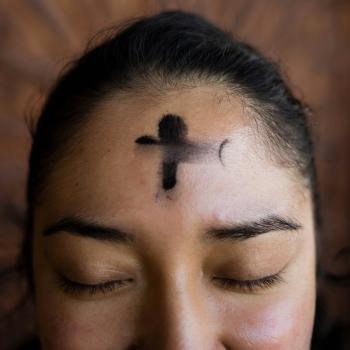Resolved: the ritual of footwashing on Holy Thursday should be abolished or completely revised.
Another Holy Thursday has come and gone, and with it the predictable storm over washing women’s feet during the ritual laving at the evening mass. Pope Francis has made his opinion on this matter very clear, going out to wash the feet of 12 men and women with disabilities at a home in Rome. Bishop Morlino led the opposition, very publicly instructing his priests that they were to either wash the feet of 12 men or omit the rite entirely. Various conservative bloggers huffed and puffed. Fr. Z stiffly argued that Bishop Morlino was only enforcing Church law: the Pope may violate it if he chooses, but the rest of us are obliged to observe it, despite his example. Canonist Edward Peters has mostly been silent this year, but his two columns from last year (here and here) are still heavily cited. His argument is more subtle, but in essence he argues that we should observe the letter of the law lest we encourage disregard for the law. (He is, however, perfectly happy to change the law.) Fr. Ray Blake, a priest in England, gives a passionate argument for preserving the traditional practice. And of course, any article about this at the National Catholic Reporter includes endless comments ranting against the Church.
Reflecting on this tempest I am led to ask: though every year traditionalists and progressives (and indeed, traditionalists and pretty much everyone else) fight over whether to wash the feet of women, are we asking the right question? I want to dig deeper and suggest that the rite has become an exercise in self-absorption and no longer works as a ritual. In the typical parish, the pastor dutifully selects a handful of folk (often after agonizing as to whether they are truly representative of his parish), they come up to the sanctuary and sit uncomfortably while the priest or deacon washes one foot and (though less often) kisses it before moving on. They put on their sock and shoe and return to their seats. Does it make an impression? Probably. Does it drive home Jesus’ commandment to love one another? I am far less certain. It follows the powerful passage from John’s gospel and the chants and hymns that accompany it focus on humble service, but I really wonder whether the symbol itself still conveys this message. The symbol itself is foreign—we no longer have foot washing bowls at our front doors, or slaves to wash our visitors—and despite some powerful homilies that I have heard, it does not connect well to our current understanding of service. In particular, that it is the priest who washes the feet of laity is a distancing mechanism—this is something that the more heroic among us do, but has no connection to what we are supposed to do.
If we look at the example set by Pope Francis this year and last, we should ignore the fact that he washed the feet of both women and men, and concentrate on the other dimensions of his choices. Each time he has left the Vatican and gone out to the poor and marginalized: first to a prison, and then to a home for the disabled. He has called repeatedly for the Church to stop turning inward and to go out into the world, and to not be afraid to get its hands dirty in the process. Historically this is the way the rite evolved: prior to the reforms of Pius XII in 1955 the foot washing was not part of the mass, and in many places, particularly religious communities, it was reserved for twelve poor people.
I think we should give serious consideration to following this aspect of the Pope’s example. What would it say to the world (and equally importantly, what would we be forcing ourselves to remember) if instead of a solemn liturgy in our parish Church, the parish went out into the community in an act of service and self-abegnation? We could repaint the local homeless shelter, cook a fancy meal for all the residents, stock their pantry, buy the children new outfits, and then—only then—have a ceremony in which our pastor and deacon wash the feet of 12 residents as a ritual sign of the love we had spent the day trying to live out.
This would not be easy: in fact, it would be very easy to do this badly, turning the poor into liturgical objects that we use rather than people whom we serve and love. Or it could, as Pope Francis has warned in another context, turn the church into a social-service agency and not into a community of believers. But I also think that with effort it could be done well and make the words of Jesus take root in our hearts:
[Jesus] said to them, “Do you realize what I have done for you? You call me ‘teacher’ and ‘master,’ and rightly so, for indeed I am. If I, therefore, the master and teacher, have washed your feet, you ought to wash one another’s feet. I have given you a model to follow, so that as I have done for you, you should also do.”
________________________________
To all the readers and commentators on Vox Nova: I wish you all a blessed and happy Easter. May the joy of the risen Christ be with you and your near and dear ones, and may you find all consolation in the light of Christ. DCU.
_______________________________
Updated (an hour after posting): I had forgotten that this was a topic of discussion last year. Many of the commentators touched on issues related to my post today.












